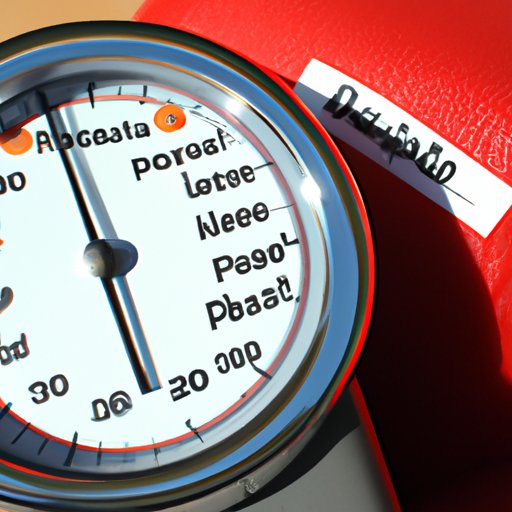
Introduction
After exercising, many individuals may experience a temporary spike in blood pressure. This surge is a natural response to the increased demands placed on the cardiovascular system during physical activity. Although typically short-lived, understanding the causes and effects of post-workout blood pressure fluctuations is critical to maintaining overall health and wellbeing.
The Science Behind Post-Workout Blood Pressure Spikes
Blood pressure is a vital component of cardiovascular health, and it plays a critical role in maintaining optimal organ function and overall well-being. During exercise, blood pressure may fluctuate, depending on the intensity and duration of the activity. The constriction of blood vessels during physical activity can cause an acute rise in blood pressure. As a result, during and immediately following exercise, blood pressure may temporarily spike.
Exploring the Link Between Exercise and High Blood Pressure
While regular exercise has been shown to reduce blood pressure levels over time, some individuals may experience a temporary rise in blood pressure after exercise. This phenomenon is more likely to occur in people who are overweight or have higher-than-average blood pressure. Fortunately, these temporary spikes rarely cause any significant harm and typically disappear within an hour of exercising.
Should You Be Concerned About Elevated Blood Pressure After Working Out?
The temporary rises in blood pressure that some people experience during or after exercise are generally not a significant cause for concern. However, there are certain scenarios where there may be cause for alarm. Individuals with hypertension or a history of cardiovascular disease should monitor their post-workout blood pressure levels and discuss any concerning changes with their healthcare provider.
How to Manage High Blood Pressure Post-Exercise
There are several strategies that individuals can implement to help manage post-workout blood pressure spikes. These may include making lifestyle changes, adhering to specific dietary recommendations, or taking medications as prescribed. Practicing stress-management techniques and staying adequately hydrated can also help prevent post-workout blood pressure surges.
Understanding the Role of Intensity in Post-Workout Blood Pressure
The intensity of exercise can also play a role in post-workout blood pressure fluctuations. More intense activities such as running or weight lifting can result in higher blood pressure spikes than lower intensity activities like yoga or brisk walking. Regular exercise that includes both high and low intensity activities can help balance post-workout blood pressure changes.
The Connection Between Cardiovascular Fitness and Post-Exercise Blood Pressure
There is a strong link between cardiovascular fitness and blood pressure regulation. Regular physical activity can help improve cardiovascular health, reduce inflammation, and lower blood pressure levels over time. Incorporating aerobic exercise into your routine can help maintain healthy blood pressure levels and reduce the risk of post-workout spikes.
Tips for Reducing Blood Pressure Spikes After Exercise
There are several practical tips that individuals can use to reduce blood pressure spikes after exercise. These include warming up and cooling down before and after physical activity, monitoring exercise intensity, staying hydrated, and practicing stress-management techniques. Additionally, avoiding smoking and excessive amounts of caffeine can help promote healthier post-workout blood pressure levels.
Conclusion
Overall, experiencing a temporary post-workout spike in blood pressure is common and often harmless. However, if you have a history of hypertension or cardiovascular disease, it’s essential to monitor your blood pressure levels and discuss any concerns with your healthcare provider. By making lifestyle changes and incorporating regular exercise into your routine, you can help manage post-workout blood pressure changes and promote overall cardiovascular health.




